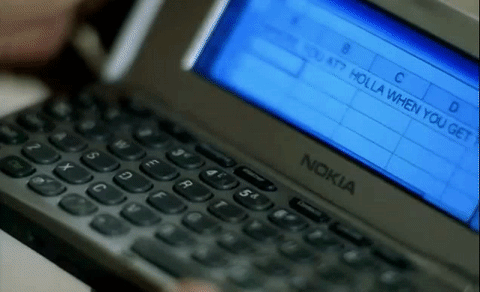How to Write a Good Resume

One of the most common questions I get from my friends and colleagues is, “How do I write a great CV?”
If you were to do a quick Google search with that exact question, you’ll find a ton of articles, and they all say similar things, but also differ in some key areas. As someone who spent a considerable amount of time going through thousands and thousands of job applications, what I want to do is give you an idea of what some of the best practices are when it comes to writing a great CV.
A CV should have five key categories so that the hiring manager, or recruiter, finds it easy to quickly scan your document and glean the necessary information. They are:
- Your contact information
- A professional statement
- Relevant skills
- Work experience
- Education
So, now that we know the five key areas are, let’s dive into each one in greater detail:
CONTACT INFORMATION
The information you provide here may not seem like such a big deal, but when writing a great CV, everything matters. On most applications I’ve come across, typically the applicants will include things like their full legal name, email address, phone number, and the address where they live. On some rare occasions, I’ve even seen candidates include a professional headshot as well.
While a photo may seem like a harmless addition, especially if they decide to look at your LinkedIn profile, some recruiters can have a visceral, negative reaction, as it is an unnecessary addition that takes up the entire top corner of your CV. Instead, use that valuable real-estate to focus on your achievements and accomplishments.
The aspect is that you also never know who is reviewing your application. There are still many people in this world that will pass over a qualified candidate just because they don’t like the way they look. Even your address can trigger unintended biases in recruiters. “Oh, this person lives in abc area? Well, I’m not going to hire them then!” Your address can be divulged if you become the successful and chosen candidate for the position you’ve applied for, as at that time, your application has stood on its own merit.
With this in mind, the only pieces of information you should actively include in this portion are your full legal name, email address, phone number, and your LinkedIn URL.
PROFESSIONAL STATEMENT
A professional statement is a quick summary of your relevant skills and experience as it relates to the job and organization you’ve applied for. It gives the recruiter a quick idea of what you can offer the organization in terms of your knowledge, skills, abilities, and educational background, as well as informs them of why you have chosen to apply. Typically, this section shouldn’t be more than three sentences.
If you’re struggling, what I recommend is do a quick search online for templates related to the role you’re applying for. For instance, if you’re applying for a role as a retail sales manager, then search for templates that include similar professional statements. Do not copy/paste, as this is very obvious to recruiters, but use it as a starting point or building block.
RELEVANT SKILLS
This is one of the areas which is somewhat debated. Is it necessary, especially if you have a section dedicated to your work experience in which you can list these? For me, I think it’s a great section to include for two reasons.
First: your work experience section shouldn’t just be a list of your skills and responsibilities. It should be an area focused on your achievements and accomplishments. More on this later.
Second: Almost every organization I know of these days uses some form of Applicant Tracking System. It’s an invaluable tool that scans each application against the job description and spits out a rating based on keywords for each candidate. The more keywords you have, the better your rating. So, by including a skills section, you can tailor your CV to each specific job (which you should be doing anyway!), and this will hopefully result in your application being surfaced to the top of the pile.
WORK EXPERIENCE
Now, this is where the real meat and potatoes of your CV comes into play. When writing this section, there are a few key things you want to keep in mind.
First, your work experience should be in reverse chronological order, from most recent to oldest. This may seem like a no-brainer, but again, when you’ve seen as many resumes as I have, it really isn’t. Recruiters are most interested in your most recent (current or former) position, and why you’re looking to leave (or why you left). If they have to scroll and dig into your CV to try and piece together a timeline, their impression of your application will plummet. Make it easy, and keep it simple and concise.
Second, do not just list your job responsibilities. What I mean by this is, don’t just write, “responsible for managing a team of 10 individuals, “or, “lead the team to meet weekly sales targets.” While this may seem like an accurate description of what you did, it does not, however, translate into the recruiter understanding the impact of those actions. The recruiter knows what was on the job description, but they want to know what you did with those responsibilities. They want to see the impact, innovation, and execution. A great way of reframing this is by looking at the, “so what?” factor. For each bullet point in your CV, you should be thinking that the recruiter is going to think to themselves, “you lead the team to meet weekly sales targets. So what?” Try to quantify the impact that had on the team and the customers, and mention an increase in sales year-over-year, and an improvement in customer engagement surveys as an example of the impact you had in this role.
Third, ensure that your CV is easy to read. I’ve seen too many applications with more than four different typefaces, and all that lead to was visual clutter. While you may like a particular font because it looks aesthetically pleasing to your eye, it might not have the same effect for the recruiter. Stick to fonts that are guaranteed to be installed on every computer, such as Arial, Times New Roman, or dare I say, Calibri? There’s a reason why Calibri is the default typeface in Word, and that’s because it’s so incredibly easy to read and understand.
The other aspect for this third point is that should you choose to get creative with the colour palette and layout, again, while it may look visually appealing to you and the recruiter, it may not mesh well with the organization’s Applicant Tracking System. Often times, these systems re-display the text from your CV in a proprietary format. If it can’t pull the information based on your creative layout, it may just throw up a series of “???” or even leave large swaths blank.
If you do happen to get creative with your formatting, make sure that you save and submit your document as a .pdf. This is a good practice to get into, as it ensures when the recruiter opens up the file on their end, everything (fonts and colours) will display as you intended.
Recruiters want to be able to see your skills, education, and the progression of your work experience in an easy to read manner. If it’s formatted nicely and gels well with the Applicant Tracking System, that’s just a bonus.
Fourth, speak to the key points in the job description. Make sure that you’re actively mirroring the language when describing your experience. Realistically, you will not meet 100% of the criteria, but if the first few points do, those are what will help make up that difference from a screening perspective. This applies to not just the keywords, but the job titles as well. If your job title doesn’t reflect your current duties then, you can use the job description to explain fit and ensure that you’re not unintentionally screened out.
Fifth, keep it concise. A general rule of thumb is that your CV should be 1 to 2 full pages. Any more than that and the recruiter will only have time to quickly skim and may miss out on important information. Keeping it concise also means only keep roles that are relevant to the position you’re applying for on your CV, and only keep roles that are recent enough to warrant attention. You may be proud of your accomplishments as a babysitter in 1987, but that was 30 years ago and might not be so relevant for the position you’re applying for today. In a word, eliminate the cruft. Don’t put every little detail on your resume. Just put what’s most relevant and will have the greatest impact. Your cover letter and interview are where you can elaborate as necessary.
Sixth, make sure it’s error-free. A small spelling mistake here and there may not seem like much, but if you’ve listed strong attention to detail on your resume, then you can guarantee that when the recruiter notices it, it won’t bode well. The same goes for ensuring that the organization is listed accurately and spelled correctly. I cannot tell you the number of times I’ve read an application with the wrong organization written down or the wrong job posting title listed. If a recruiter is deciding between two applicants, the one that’s taken the time to ensure that their application is well put together will usually be the one that wins out.
EDUCATION
The reason that I list Education last on the list is that it’s not as important as you’d think. While having an education background in a particular field is certainly an asset, especially for specialized industries and fields, it’s not necessarily the same for all positions. Recruiters will often look at the entirety of your work experience as a whole to determine if you’ve learned enough of the core competencies on-the-job or not, and if you happen to have the educational background, that’s awesome.
When listing your educational background, I recommend keeping it simple. The recruiter will not really care what your research project was, or what your GPA was. As long as your education is relevant to the field, and your work experience can demonstrate that you’ve been utilizing it effectively, that’s what really matters.
Essentially, just list the college or university, the program of study, the geographic location (city, country), and years of study. If you’re currently in the process of completing your education, you can write the year you began to present, or give an estimated year of completion - both are more than okay.
And that’s really all there is to it. Crafting a really great resume that will stand out takes time and effort, especially if you’re taking the time to be truthful and ensure that it’s tailored for the job you’re applying for.
In the end, be genuine and be yourself. More and more companies are looking to hire the right person, not just the person with all the qualifications, so fit is really important. It’s often less about what you’ve done and more about who you are and how you’ll approach the job, so don’t be afraid to inject a little of your personality into the application.
Applying for a job, especially if it’s your first time or are undergoing a career shift, can be daunting. But, if you follow those simple steps, you can create a compelling and focused showcase of your experience and expertise, and with a little luck, land that dream job of yours.




